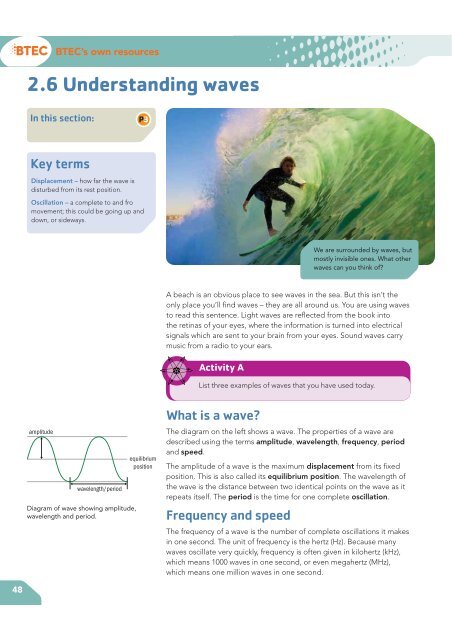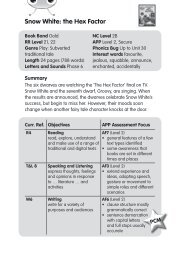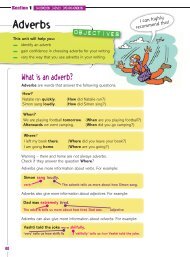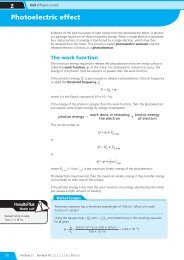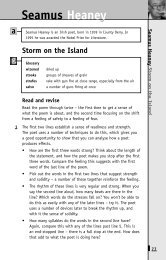Energy and our Universe - Pearson Schools
Energy and our Universe - Pearson Schools
Energy and our Universe - Pearson Schools
You also want an ePaper? Increase the reach of your titles
YUMPU automatically turns print PDFs into web optimized ePapers that Google loves.
48<br />
amplitude<br />
BTEC’s own res<strong>our</strong>ces<br />
2.6 Underst<strong>and</strong>ing waves<br />
In this section:<br />
Key terms<br />
Displacement – how far the wave is<br />
disturbed from its rest position.<br />
Oscillation – a complete to <strong>and</strong> fro<br />
movement; this could be going up <strong>and</strong><br />
down, or sideways.<br />
wavelength/period<br />
Diagram of wave showing amplitude,<br />
wavelength <strong>and</strong> period.<br />
P3<br />
equilibrium<br />
position<br />
A beach is an obvious place to see waves in the sea. But this isn’t the<br />
only place you’ll find waves – they are all around us. You are using waves<br />
to read this sentence. Light waves are reflected from the book into<br />
the retinas of y<strong>our</strong> eyes, where the information is turned into electrical<br />
signals which are sent to y<strong>our</strong> brain from y<strong>our</strong> eyes. Sound waves carry<br />
music from a radio to y<strong>our</strong> ears.<br />
Activity A<br />
List three examples of waves that you have used today.<br />
What is a wave?<br />
The diagram on the left shows a wave. The properties of a wave are<br />
described using the terms amplitude, wavelength, frequency, period<br />
<strong>and</strong> speed.<br />
The amplitude of a wave is the maximum displacement from its fixed<br />
position. This is also called its equilibrium position. The wavelength of<br />
the wave is the distance between two identical points on the wave as it<br />
repeats itself. The period is the time for one complete oscillation.<br />
Frequency <strong>and</strong> speed<br />
We are surrounded by waves, but<br />
mostly invisible ones. What other<br />
waves can you think of?<br />
The frequency of a wave is the number of complete oscillations it makes<br />
in one second. The unit of frequency is the hertz (Hz). Because many<br />
waves oscillate very quickly, frequency is often given in kilohertz (kHz),<br />
which means 1000 waves in one second, or even megahertz (MHz),<br />
which means one million waves in one second.


